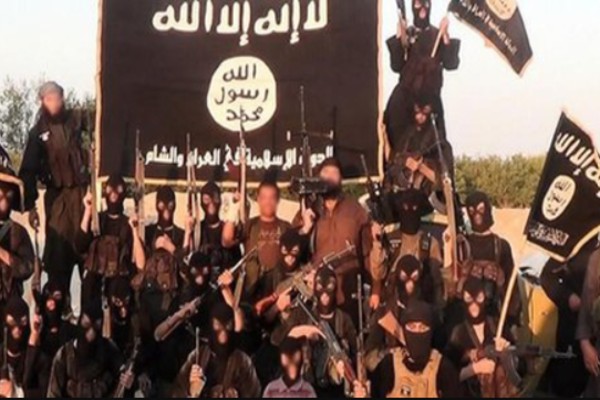In a July 25 article for Small Wars Journal titled “Forecasting the Fifth Wave: Emerging Terrorist Threats in a Changing World”, Prof Mahmut Cengiz examines how global counterterrorism efforts continue to falter—not because of a lack of resources, but due to the persistent failure to anticipate the next phase of terrorist evolution.
From the September 11 attacks to the 2002 Bali bombings, the 2015 Paris massacre to the October 7, 2023 Hamas operation, time and again, security establishments have been caught off-guard. The pattern, as Cengiz points out, is not accidental. It reflects deep-rooted limitations in how governments and scholars conceptualise terrorism. While policy practitioners tend to react after the fact, academics often lack models flexible enough to predict new threats emerging from old ideological foundations.
To explore this challenge, Cengiz revisits David Rapoport’s influential theory of terrorism’s four historical “waves”. Each wave, according to Rapoport, lasts around 40 years and is marked by a dominant ideology and method of violence.
The Anarchist Wave, which spanned the 1880s to 1920s, was characterised by revolutionary violence and symbolic assassinations—many carried out with dynamite and often involving women.
The Anti-Colonial Wave that followed (1920s–1960s) saw insurgent groups like the IRA, FLN, and Irgun use targeted violence against occupying colonial powers, often backed by diaspora funding and political sympathy.
The New Left Wave (1960s–1980s) focused on revolutionary Marxism, with groups like the Red Brigades and Weather Underground launching attacks on state institutions and capitalist structures in the name of global solidarity.
Then came the Religious Wave, beginning around 1979, with Salafi-jihadist groups redefining terrorism through the lens of divine sanction. Suicide bombings, martyrdom narratives, and ideological rigidity became central to this phase, which continues to dominate the global terrorism landscape today.
But now, Cengiz argues, the world may be entering a Fifth Wave of terrorism—though it may not look radically different from the fourth. Drawing on recent data from the Global Terrorism Trends and Analysis Center (GTTAC), he proposes that what we’re witnessing is not a clean ideological break but an evolved phase of the religious wave.
The most credible indicators of this shift, based on GTTAC findings, are the enduring strength of Salafi-jihadist groups and the growing global reach of Iran-backed terrorist networks. Instead of a fresh start, the fifth wave may be a dangerous continuity—a structural and geographical transformation within the same ideological framework.
Cengiz is careful not to overstate novelty. He stresses that waves do not vanish suddenly; they morph, overlap, and evolve. What we’re seeing now is a slow mutation. The religious wave, nearly five decades old, is showing signs of ideological fatigue and fragmentation, but it is far from dead. Rather, it is being repurposed by emerging groups that operate with looser hierarchies, regional ambitions, and hybrid support structures.
These actors are not abandoning religious justification—they are adapting it. Whether through Salafi dogma or Shia revolutionary theology, the goal remains the same: to legitimise violence through appeals to divine authority and historical grievance.
The transition period Cengiz identifies—roughly the early 2020s to present—is therefore critical. It marks a moment when new threats are crystallising under old banners. Among the most prominent are resilient Salafi-jihadist groups, still active across Africa, the Middle East, and South Asia, and Iranian proxy networks like Hezbollah, whose integration into regional politics and asymmetric warfare makes them uniquely dangerous.
Unlike the traditional non-state actor, Iran-backed groups blend state sponsorship, ideological indoctrination, and strategic patience. They operate across multiple domains—from conventional warfare to cyber operations, from targeted assassinations to influence campaigns—expanding the toolkit of modern terrorism far beyond suicide vests and IEDs.
While Cengiz does not mention Pakistan, the fact remains that the country trains, arms, shelters and uses terrorists as an instrument of state policy.
Importantly, Cengiz does not indulge in speculation about entirely new ideological movements taking centre stage. He rejects the temptation to declare the rise of, say, techno-terrorism or eco-extremism as the defining feature of a fifth wave. Instead, he insists that analysts and practitioners must focus on what is actually changing within existing threats. This includes shifts in group structure, the role of digital communication, transnational funding mechanisms, and state facilitation.
The fifth wave is not coming—it may already be here, wearing the familiar mask of the fourth, only more agile and embedded in state systems.
This has profound implications for global security. The prevailing assumption that the religious wave is fading because al-Qaeda and ISIS have lost territory or leadership is deeply flawed. Cengiz warns against equating territorial loss with ideological death. The data shows that ideologies endure, tactics evolve, and threats persist in new forms. The fifth wave, then, will not be defined by grand declarations or new manifestos, but by adaptive survival, ideological recycling, and the integration of militant violence into broader geopolitical strategies.
Policymakers must shed the illusion that the next threat will look dramatically different. As Cengiz makes clear, the real danger lies not in what is new, but in what is unfolding in plain sight. Salafi-jihadist movements and Iranian proxies are not yesterday’s threats—they are today’s evolving challenge. Counterterrorism strategies that fail to recognise this risk becoming obsolete.
In the end, the article in Small Wars Journal is less a prediction than a warning: the fifth wave of terrorism is not a rupture but a continuity cloaked in transformation. If the past failures to foresee major attacks offer any lesson, it is this—underestimating the capacity of old ideologies to adapt is itself a dangerous blind spot. The future of terrorism may not belong to something entirely new, but to something very old that refuses to die.
In a career spanning three decades and counting, Ramananda (Ram to his friends) has been the foreign editor of The Telegraph, Outlook Magazine and the New Indian Express. He helped set up rediff.com’s editorial operations in San Jose and New York, helmed sify.com, and was the founder editor of India.com.
His work has featured in national and international publications like the Al Jazeera Centre for Studies, Global Times and Ashahi Shimbun. But his one constant over all these years, he says, has been the attempt to understand rising India’s place in the world.
He can rustle up a mean salad, his oil-less pepper chicken is to die for, and all it takes is some beer and rhythm and blues to rock his soul.
Talk to him about foreign and strategic affairs, media, South Asia, China, and of course India.





